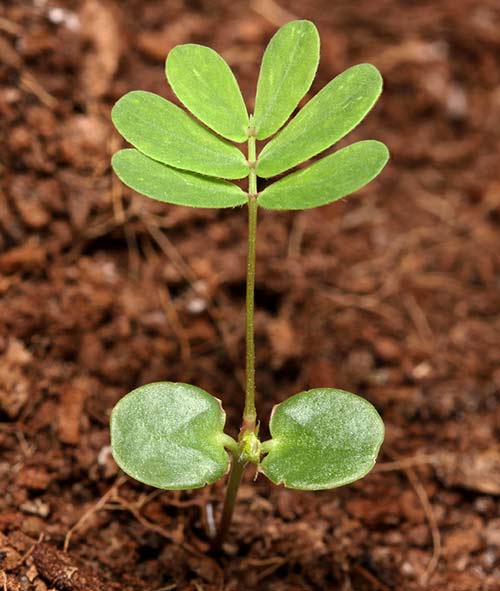cotyledon

Mimosa pudica (a dicot) seedling with two cotyledons and the first "true" leaf with six leaflets.
A cotyledon is a leaf that forms part of the embryo of a seed. A cotyledon is much simpler in structure than later formed leaves and usually lacks chlorophyll. Monocotyledons have one and dicotyledons have two cotyledons in each seed. In gymnosperms the number varies.
Cotyledons play an important part in the early stages of seedling development. In some seeds, e.g., peas and beans, they are storage organs from which the seedling draws food. In other seeds, e.g., grasses, food stored in another part of the seed, called the endosperm, is absorbed by the cotyledons and passed on to the seedling.
The cotyledons of many plants later appear above ground, develop chlorophyll, and synthesize food material by photosynthesis.


